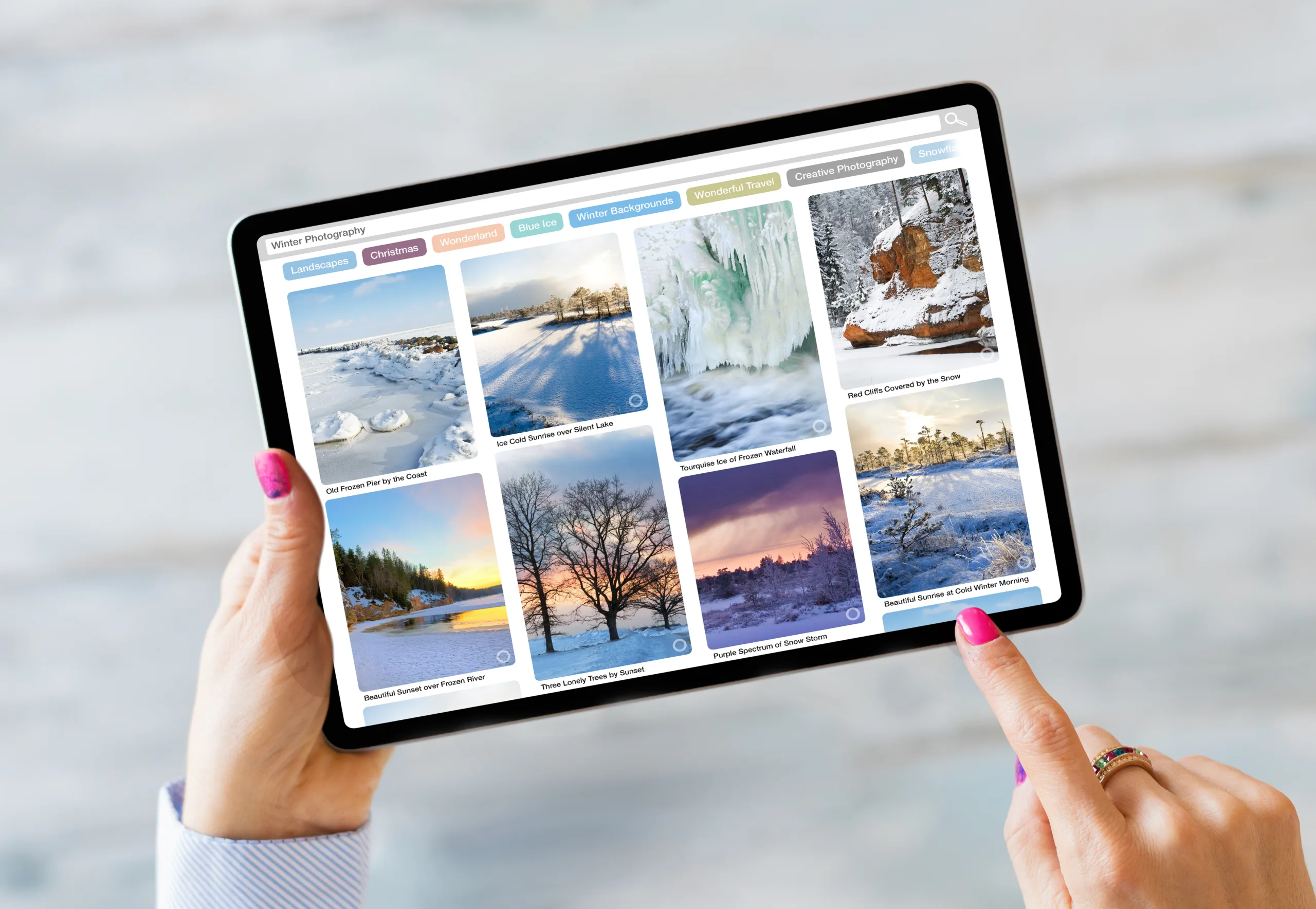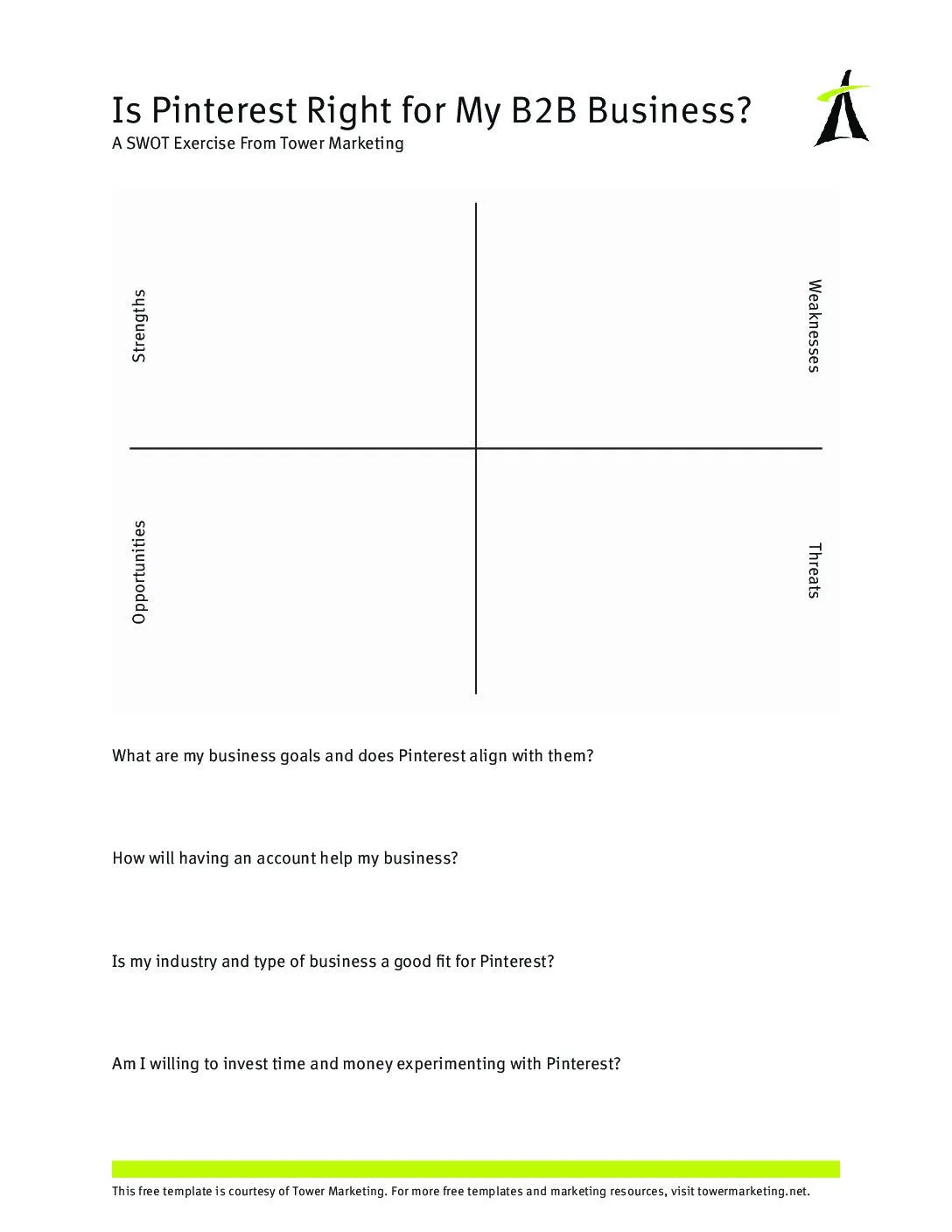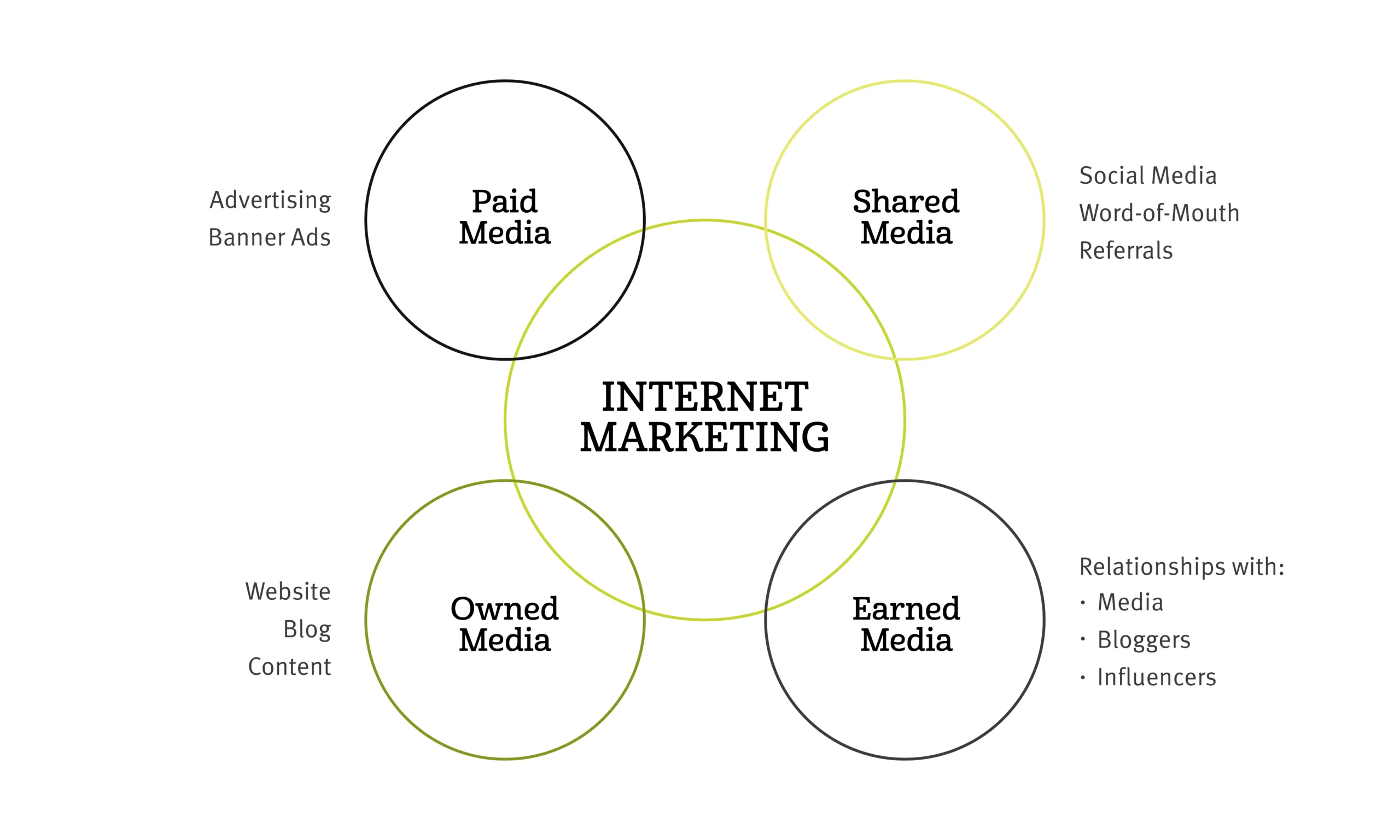If you’ve been asking yourself whether your B2B business should have an account on Pinterest, the truth is there is no clear cut answer. It all depends.
Pinterest was the fourth most used platform at the end of 2019 so there’s clearly a huge audience to reach through marketing. It’s also worth noting that:
- Pinterest grew its active user base by 26% from 2019 to 2020.
- 71% of Pinterest users are female and 29% are male
There’s a lot of potential on this platform, but don’t rush to create a business account just yet. Start with research to gauge if you have any target audiences on the platform.
Navigating Pinterest marketing in regards to your business can be overwhelming, especially if you haven’t spent much time on it. Doing B2B marketing on Pinterest is definitely valuable for some businesses, but for others, it’s not an effective choice.
This blog will explore what a strong Pinterest marketing strategy looks like and show examples of successful B2B companies using Pinterest effectively. We’ll also provide you with a free, Pinterest SWOT resource that can help you start figuring out if and how you can leverage Pinterest to grow your business.
B2B Pinterest Marketing Strategy
Content is your business’ currency on any social media platform. Before you even start B2B marketing on Pinterest, you need to first make sure you have high-quality content. This is what makes your target audience want to follow and interact with you.
Why is this step important? Some people may use Pinterest to follow friends, but most use Pinterest to find the information they’re interested in. And that information can be anything returned from their search, from sponsored ads to organic pins promoting blogs, videos, and other content. Your audience’s search behavior is the key to your success on Pinterest.
You can’t reap the benefits of Pinterest marketing if you’re only ever pinning content made by others. Make something of your own that’s also worth sharing.
Organic Vs. Paid Distribution on Pinterest
After you have your content resources, it’s time to strategize how social media accounts, like Pinterest, can be used as a content marketing distribution channel. Pinterest B2B marketing is most effective with a plan that uses both organic (aka unpaid) and paid posting. Both are valuable methods for growing your followers and reaching new potential customers.

Organic Pinterest Pins
Anyone creating a pin on Pinterest, including B2B companies, should first read through Pinterest’s guide to creating great pins. It’s full of great tips to help you understand how you can choose or create the best images for your pins. It also has tips for optimizing your text, incorporating your logo, and branding your posts. Pinterest also has extensive resources to help you learn the ins and outs of creating boards, pinning, and more on its platform. Like any social media account, your organic posting will get very little engagement in the beginning. Don’t be discouraged though, as with time and a willingness to experiment you will learn what tactics work to increase your followers.
Organic Pins & Search Engine Optimization
One way you can help your organic pins is to incorporate an SEO keyword strategy in the pin that you are writing directly on Pinterest or even on your account page. You don’t need to have any fancy SEO tools to do so (although they do make it easier). Start by searching to find keywords related to your B2B business, industry, or product. See what competitors are using in their pins if possible, and look at what Pinterest is suggesting in its search bar as you start typing. From there, gather a list and decide what phrases you want to use. Doing this makes your unpaid pins easier to find through search on the platform.
Paid Pinterest Pins
Once you’ve created an organic posting plan, it’s essential that you also set aside money and make use of paid advertising on Pinterest. By the end of 2019, Pinterest recorded having 320 million active users monthly, with 58% of those users saying they used it to make shopping decisions. The problem is that with algorithms and other factors, it’s difficult to target the users you want to reach solely by posting unpaid content. But with paid ads on Pinterest, you can expand your visibility much more quickly. By paying to boost a pin, you can choose specific targeting in regards to location, gender, age, interests, languages, keywords, and more. Because of that, your content is more likely to reach people who are interested in it. And one of the awesome benefits of Pinterest marketing is that users can save your paid pin just like they can save a regular pin. This is a great way to see what content your audience is finding valuable. Best of all, long after your paid post ends, the people who saved it can still go back and reference it. This gives your advertising a longer lifespan than it has on other popular platforms.
So, Does Pinterest Work for B2B Businesses?
The answer is both yes and no. The key to making Pinterest work for B2B marketing is to do your research and curate content to align with the data.
Find out what audiences are on Pinterest and how they intersect with your customer demographics. Then figure out what angle you need to take to interest those audiences and engage with them on Pinterest. Building that relationship, brand awareness, and authoritative voice is what can give you an advantage when they’re ready to buy.
There are plenty of blogs on best practices for creating a Pinterest business account and managing it. But when it comes to B2B marketing on Pinterest, it’s more valuable to look at real-life examples of companies who are and aren’t doing it successfully. That way if you decide to get on Pinterest, you have examples of strategies that are actually working for other B2B groups.

Examples of Poor Pinterest B2B Marketing
When it comes to finding B2B Pinterest examples of companies who aren’t successful, it’s actually quite difficult. Part of it is that no one wants to talk about when Pinterest marketing isn’t effective. The other issue is that their account is doing so poorly it’s hard to find through search. However, there are some valuable lessons that can be learned from studying their profiles and content. Below are two B2B companies that definitely have the potential to increase their business through Pinterest marketing, but currently aren’t doing a stellar job. I’ll dive into some main takeaways below for each, but check out the link to their accounts and have a look for yourself.
HubSpot Creative’s Pinterest
HubSpot is recognized as a leader in marketing, sales, and customer service software, so you may be surprised to see they’re on Pinterest. But a segment of their business, HubSpot Creative, actually has an account geared towards people interested in marketing and design. This should be a great fit given the visual, creative nature of Pinterest. The problem? They only have around 400+ followers. And for a company with such high brand recognition in its field, that’s not enough to make an impact. Let’s break down their account. What did they do well?
- They create well-organized topic boards.
- Their account uses high-quality images.
- All pins are clearly and consistently branded.
Where do they struggle?
- Their only in-house content is team updates.
- Some of the content is great to view but offers nothing beyond the image.
- The account leads to a Tumblr page instead of their main website, creating a credibility issue.
Staples NAD’s Pinterest
You also might be surprised to learn that Staples has an account geared towards its B2B customers. And while it’s not a bad account, it’s not performing like a competitor (Office Depot) that I’ll cover below. The account only has 64 monthly views, and after gauging their competition, that’s a low number for their level of name recognition. What did they do well?
- Their account is verified, adding to its credibility.
- Pins are being used to distribute their online Work Life Magazine.
- Imagery is branded, attractive, and good quality.
Where do they struggle?
- They only have one board with a handful of pins.
- Pins are only their content, while it’s best to have a mix of your pins and external content.
- They lack diverse content, as it’s all online articles.
There are some recurring lessons from both of these examples. Pitfalls you should avoid for B2B marketing on Pinterest include:
- Only pinning your own content
- Not having your own content
- Not having enough boards
- Not establishing your credibility either by verifying your account or linking to the right website
Examples of Successful B2B Companies on Pinterest
Starting to ask yourself again if effective Pinterest B2B marketing is actually possible? While we showed where it can fail above — the answer is still YES!
Below are two B2B companies doing a killer job – and some honorable mentions that didn’t make this list, including FireRock’s Pinterest and Survey Monkey’s Pinterest. If you have some free time, it’s worth studying their accounts to see how both are leveraging this platform well.
Office Depot’s Pinterest
So above we saw a competitor, Staples NAD, engaging around 60+ views monthly. However, Office Depot is tapping into 7 million monthly views. Businesses are familiar with both suppliers and both are well-recognized brands. And they’d be engaging similar audiences on Pinterest. So why is Office Depot doing so much better?
Here are some factors playing in their success:
- Their account is verified, making it more credible.
- Written content makes use of SEO keywords and hashtags so it can perform well in search.
- The pins and content target Pinterest’s main audience demographic – women! (The majority of Pinterest users are women.)
- Branding on their images is very well-done.
- They mix up the use of images and short, eye-catching videos.
- Their content includes blogs, videos, and product spotlights, all tastefully done and diverse.
It’s exciting to see how they’ve embraced the platform and earned a great ROI as a result. They’re actively engaging millions of users every month. It’s easy to think that pens and office supplies aren’t exciting and therefore they can’t get away with B2B marketing on Pinterest — but Office Depot is doing it.
Ultimately, they realized the opportunity on Pinterest and angled their approach accordingly. They pivoted from just “selling businesses supplies” to designing a narrative. Their popular messaging includes designing your dream office and creating a picture-perfect business space to work in, which they subtly suggest starts with their supplies.
IBM’s Pinterest
So maybe you think office supplies are fun, and it makes sense to you that they can market on Pinterest. But business technology giant IBM is doing it, too. Their account has over 129,500 views monthly. So how is this B2B company performing so well?
Here are a few details worth calling attention to:
- Their account is verified, giving it that sense of credibility.
- They have diverse boards with different targeted interests like cooking, geeky tech gifts, tech in sports, tech in fashion, and much more.
- They do a great job creating a lot of women-focused content to tap into that specific audience. (Over 5,000 users follow their women in tech board.)
- The content is diverse, including blogs, old IBM photos, infographics, and cross-promoting other people’s content.
- All branding is clear and consistent.
What’s interesting here is just how good IBM is at targeting not just their audience, but who they think is on Pinterest that could potentially be their B2B client. They target tech people who love history using iconic IBM photos. They target a niche community interested in fun technology incorporated in gifts, sports, and fashion. And their targeting of professional women is also a smart move.
Encouraging women in STEM fields is a social push — but IBM has recognized it’s also a rising audience. This group is highly active on social media, so IBM has curated content around that topic. This is a smart move because it will tap into women in the field now, and the next generation of women in tech who are vocal online.

The Advantages of Pinterest Over Facebook or Instagram
It’s a no brainer for businesses to be active on Facebook, Instagram, or Twitter. But when it comes to Pinterest, it’s often a question mark for B2B companies. Here’s an overview of Pinterest user facts to persuade you that it holds value:
- The majority of Pinterest users are between ages 30 – 49.
- Around ⅓ of users admitted to using Pinterest to follow brands.
- About 6 out of 10 Millennials use it specifically to discover products.
- Only 28% of marketers worldwide use it for marketing.
As millennials in the workforce are aging, they’re gaining more responsibility, including purchasing power within their job. It’s interesting to note that they are the majority of Pinterest users and that many of them will use it for product discovery. And, we know from data that users on Pinterest are more willing to buy products compared to users of other social media platforms. That paired with the fact that only around a quarter of marketers use the platform shows a HUGE opportunity. If you find that your B2B company’s products or services can align with audiences on Pinterest, it opens the window to reach audiences that aren’t inundated with marketing. The key is taking advantage of organic and paid posts, while also figuring out the best way to present content. Native advertising is certainly a part of how B2B companies find success on the platform.
How B2B Marketing on Pinterest Can Grow Your Business
Now that you’ve seen the good and the bad, it’s time to figure out if Pinterest can actually grow your business. We’ve put together a Pinterest SWOT exercise you can use to ask some key questions to lead you to either create an account or disregard the platform.

Download & Print the Pinterest SWOT Template
It’s possible to use B2B marketing on Pinterest to grow your business, but you need to make sure it fits into your social media plan. And if you don’t have one, then it’s wise to start first by creating a social media strategy for your business.
At the end of the day, your success on Pinterest will be contingent on your willingness to put time into creating and sharing good content, analyzing data, and being flexible enough to adjust your strategy to find what tactics work.
Feel like you still need help getting started on Pinterest? Looking to improve your presence on your social media accounts? Learn how our team can help bring you better engagement online through our social media services.


